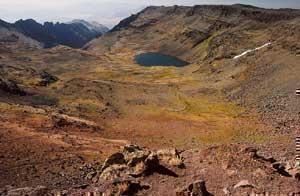Oregon Outback is an unofficial term generally used to reference the high desert Basin and Range country of the central southern portion of the state of Oregon and covers most of Lake County, Klamath County, Malheur County, and Harney County.
Although there isn’t a specific origin of the name Oregon Outback, we think it comes from the similarities to the Australian Outback. The area is very dry, receiving very little rain, and isn’t densely populated with an average population density of about 1 person per square mile.
Some of the more noteworthy features and attractions include Hart Mountain National Antelope Refuge and Steens Mountain Wilderness. The cities are few and far between with the closest city with a large population being Klamath Falls city with a population of roughly 22,000. Please note that Klamath Falls isn’t part of the Oregon Outback.
Due to the large amount of BLM, USFS, and other agency owned land, and few cities, the area has exceptionally dark skies. Groups like the IDA, International Dark Sky Association, and Rose City Astronomers have identified this area as a great place for preservation. This includes volunteers working to apply for IDA recognition for this area, and raising awareness of the importance of this area!
Did anything surprise you? Did we miss anything? Let us know in the comments below or via social media. We post articles regularly, on a weekly basis, so come back next week for more articles like this!

Thanks for the feature. Do I know you? I offer a few points of clarification. Instead of saying “it isn’t densely populated,” you might want to say that the area is sparsely populated with average population density of about 1 person per square mile.” That makes its remoteness more evident. K. Falls is not in the Outback. It’s in a different geographic province. It’s not just BLM land, but public land in general, including USFS, ODSL, USFWS, etc. Also, IDA does not identify sites for preservation, they just accept nominations from others.
Hey, Dawn. We would love to work with the Rose City Astronomers and others like yourself who are passionate on these issues as we are. Thanks for the clarifications, will make sure this is incorporated appropriately! The 1 person per square mile makes the Oregon Outback less densely populated than Alaska, which has 1.3 people per square miles. The wording regarding the IDA has been cleaned up to say that it’s been identified as a dark sky site and is applying for Ida dark sky status.